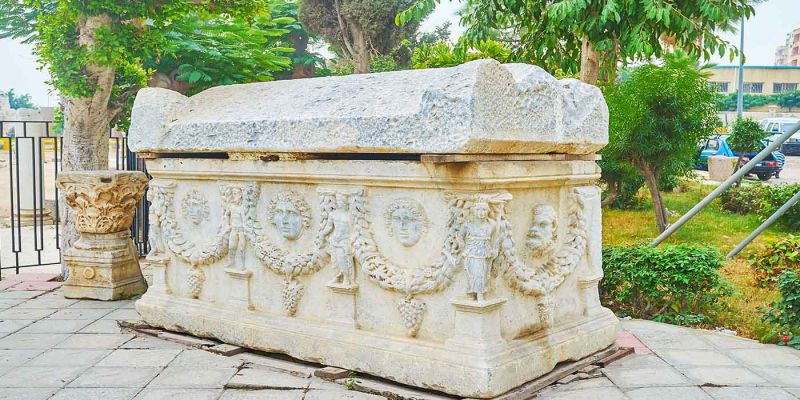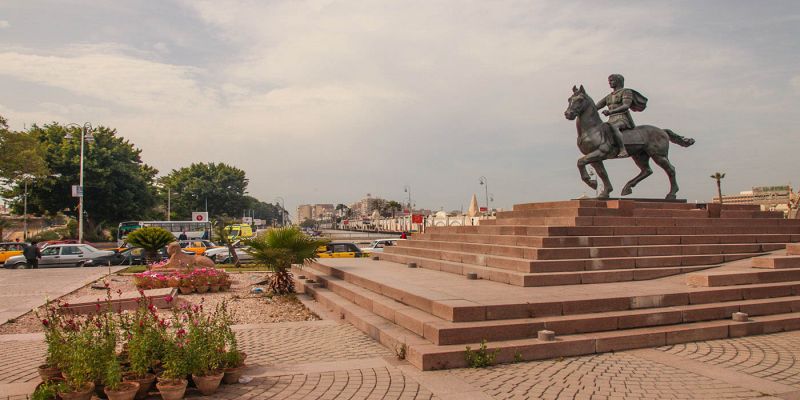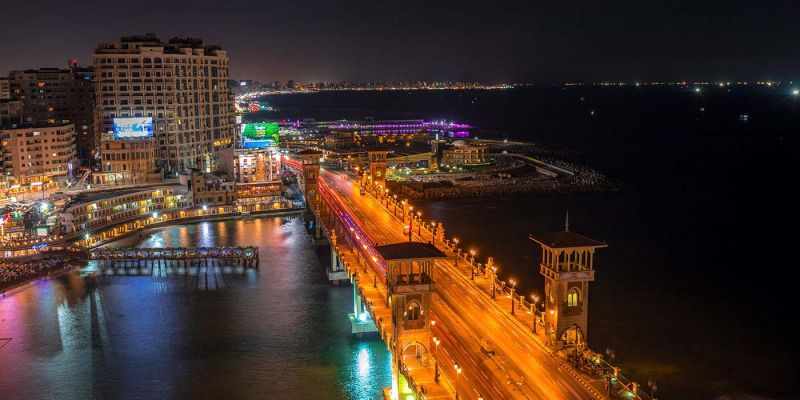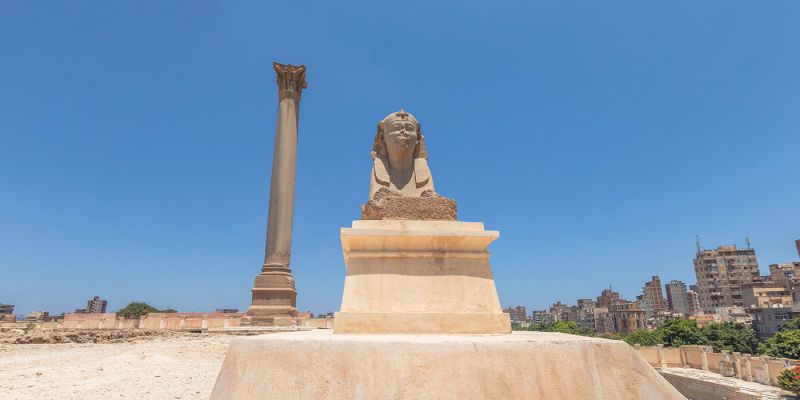Alexandria Travel Guide | Egypt
Egypt’s second city is a metropolis of 6 million people located on the Mediterranean coast at the western edge of the Nile Delta. While Cairo is nearly impossible to compete with in terms of historic architecture and monuments, Alexandria may actually be one of the few cities in the world that has a more storied history. Alexander the Great founded the city in 331 BC, making it nearly 1400 years older than Cairo, and it quickly became one of the wealthiest, largest, and most cultured cities in the world.
Today, Alexandria has relatively little to show for its iconic past. Natural disasters, repeated conquests and sieges, and the fact that the city has been repeatedly rebuilt overtop of itself have removed much of ancient and historic Alexandria from view, but it remains a beautiful and enchanting city with immediate access to the beautiful beaches of the Mediterranean.

When Alexander the Great took control of Egypt in 331 BC, he decided to build a new capital that would link the Nile Valley to the sea and his native Greece. The city that he built and personally laid out was given his name and became the seat of power in Egypt until the Arab conquest in 642 AD. The city immediately benefitted from the influence of Greek culture after Alexander’s conquests and its strategic geographic position. Within 100 years of its founding, Alexandria was second only to Rome in terms of population and it had emerged as a center of economic and cultural influence.
Under the Ptolemies Alexandria became known as the single greatest repository of knowledge in the world, home of the legendary Library of Alexandria. It was also home to one of the Seven Wonders of the Ancient World, the Pharos, or the Lighthouse of Alexandria, which is said to have towered 138 meters (450 feet) over the city’s busy harbor.

Neither the historic Library of Alexandria nor the Pharos is standing today. Along with the palaces of Alexandria from the Greco-Roman era and other important buildings, both were destroyed by a series of disasters. Earthquakes and tsunamis have changed the Alexandrian coastline, causing the lighthouse to collapse and the royal palace to fall into the sea. The great library was destroyed in a fire; however,
Alexandria’s significance was not only to be found in its architecture and wealth. As the capital of Egypt under the Greeks, Alexandria was a diverse city, home to large populations of Greeks and other ethnicities.
Alexandria was home to the largest population of Jews and the Septuagint, the only Greek translation of the Hebrew Bible that has survived to the present day. The city also became important to Egyptian Christians as the political and cultural center of Egypt during the rise of Christianity. The seat of the Coptic Orthodox Papacy is still located in Alexandria to this day.

Though it has suffered destruction from war and natural disasters several times in its history, most recently much of the city’s core was destroyed in 1882 during a three-day bombardment that marked the British seizure of power in Egypt. The city recovered though and became a thriving and cosmopolitan port again from the late 19th century through the middle of the 20th century.
This period of Alexandria’s history in immortalize in Lawrence Durrell’s Alexandrian Quartet, in which he describes the city as a decadent and vibrant place with “five races, five languages, a dozen creeds”. This chapter in Alexandria’s history came to a close, however, with the nationalist and socialist revolution of the Free Officers in 1952.
This new government, which banned non-Egyptians from owning property or businesses, and the influence of Arab nationalism, led to the exodus of Alexandria’s large Jewish and international communities and the dismantling of the multicultural society that thrived their for centuries.

Much of Alexandria’s archeological wealth is buried under the very streets that people use today and construction projects consistently reveal new finds.
Despite the destruction of many of the physical remnants of Alexandria’s history, the city still offers a growing array of impressive sites.

In the city center along the coastline, one can still see the remnants of Lawrence Durrell’s Alexandria at the Cecil Hotel and the Great Synagogue, now in disuse after the departure of all but a handful of the nearly 100,000 Jews that called Alexandria home less than a century ago. On a peninsula jutting out from the corniche stands Qaitbey Citadel, a 15th century construction, built atop the foundations of the collapsed Pharos Lighthouse.
From there the beautiful, modern construction of the Bibliotheca Alexandrina can be seen. It is a huge library, research center, and cultural venue, built on the site of the ancient Library as a memorial to Alexandria’s past.
Further island are several impressive sites from the Greco-Roman era, including the Kom Al Shoqafa tombs, considered one of the Seven Wonders of the Middle Ages. There is a little bit of every era of Alexandria’s unique history to be found hidden within the modern city.

